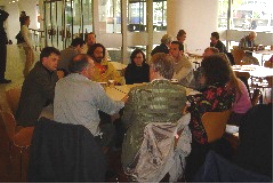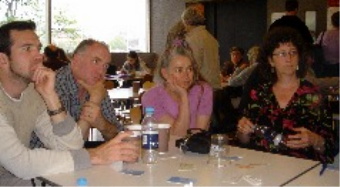Spike Hall Compiles Some Great Thoughts on Collaboration
The Aims of Group and Organizational Knowledge Work is a dense chocolate torte of ideas and links about collaboration. One that struck me full on: we lose collaborative power if we only show finished products to our coworkers or the "world"
Amen! I could spend all day with this entry and the ganache of links.



